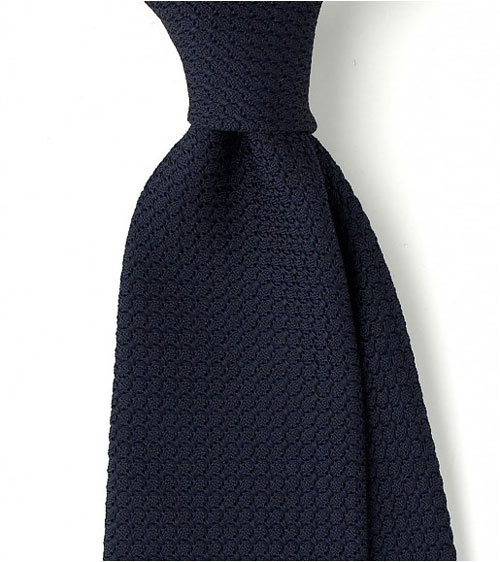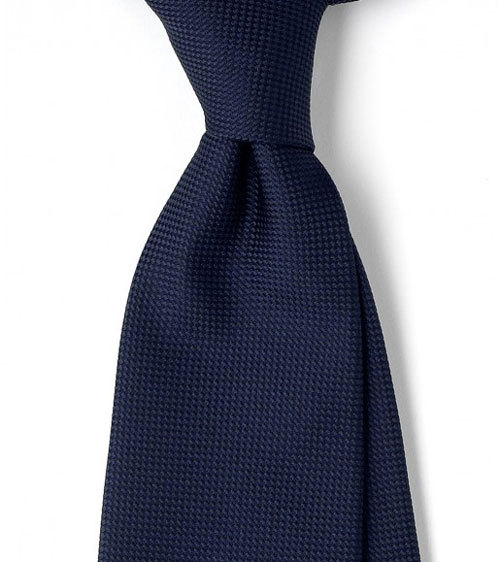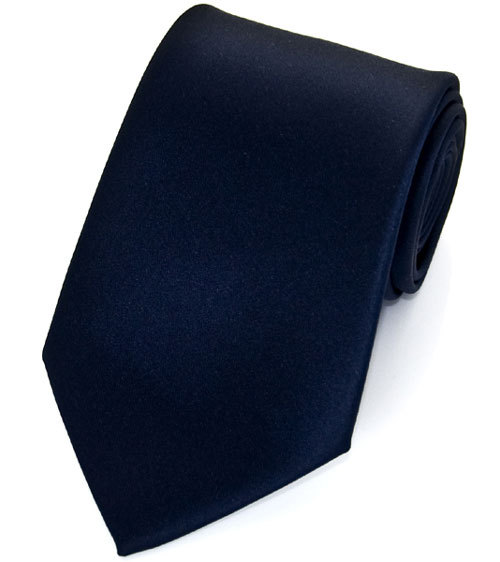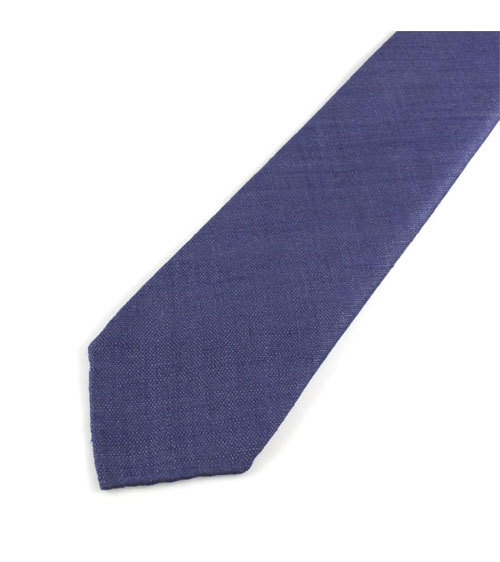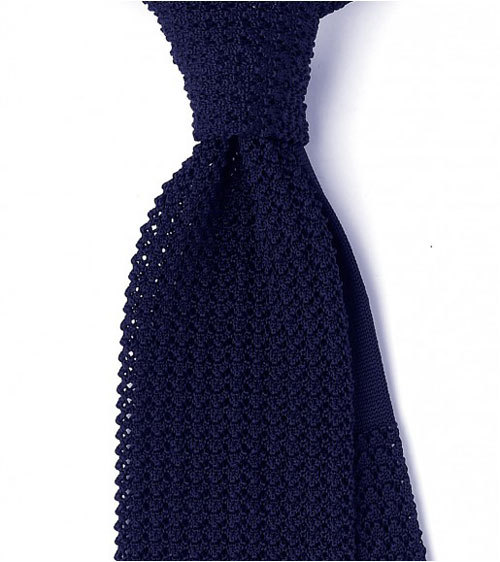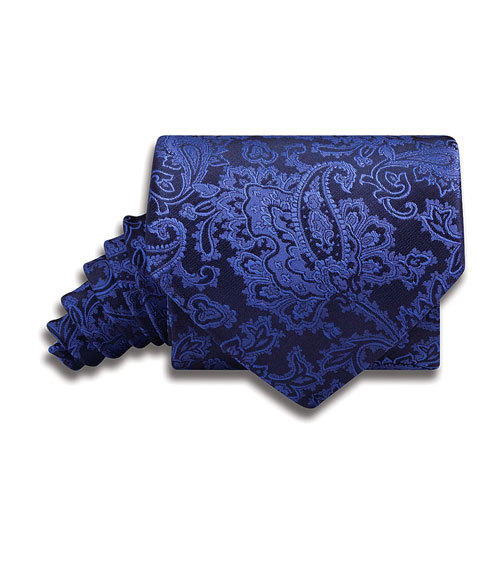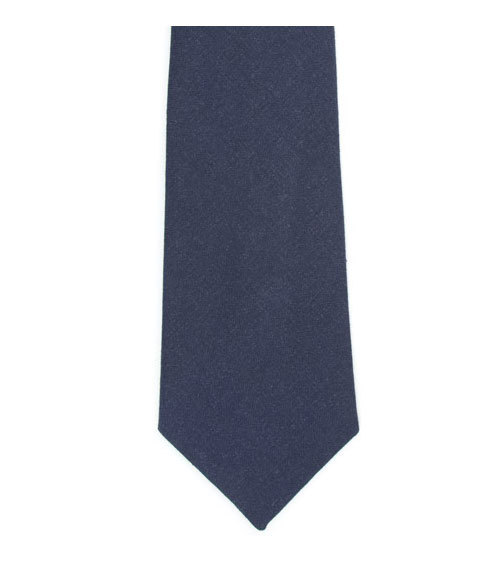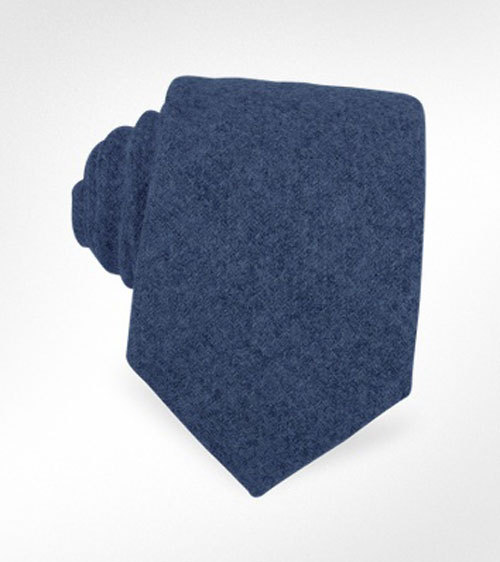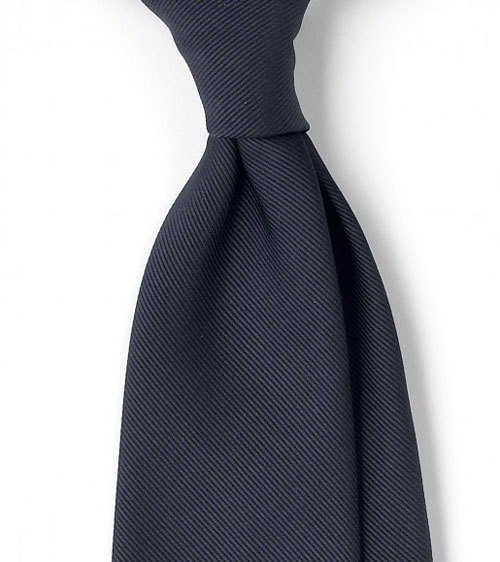
- Twill
- Grenadine
- Basketweave
- Satin
- Tussah
- Knit
- Jacquard
- Linen
- Wool
For the elegantly dressed man, a solid necktie can be an elegant way to ground a complex shirt, jacket, or both. Solid neckties are a playground for a too-often ignored element of men’s style: texture. There are many types of solid ties, so I thought I’d give you a rundown on ten of the most popular.
Follow along in the photos above: left to right, top to bottom. Click to enlarge.
- Twill. This is perhaps the most popular form of solid tie. It gets its texture from a weave common in many ties. It’s characterized by a pronounced series of diagonal ribs – like the texture of denim. Look for a twill with a distinct and pronounced texture for maximum impact.
- Grenadine. The grenadine tie is a complex weave which creates a beautiful variegated texture. There are two types – garza grossa and garza fina. If your Italian’s up to snuff, you know that simply means large weave and fine weave. The grenadine is one of the most versatile neckties you can own – the solid color makes it easy to wear, the texture gives it visual interest.
- Basketweave. The basketweave sold tie is usually easily found as well. It uses a weave similar to an oxford shirt. Sometimes, as in an oxford shirt, it features two colors, as in the example above, which features navy and midnight blue. Style aficionados generally prefer the grenadine, which simply has a more dynamic, interesting texture.
- Satin. Satin ties have a hard, shiny finish which make them perfect for evening wear. It contrasts well with softer wools, like flannels. That shininess can make them appear cheap in the harsh light of day, though. They’re also tainted by what you might call the Regis Factor – their association with the late 90s trend of matching solid satin tie to colored shirt. Still, a black or navy satin tie can add a luxurious touch to nighttime dress.
- Tussah, Shantung, Raw & Textured Silks. This group of ties features a nubbly, uneven surface. This isn’t achieved through a particular weave, but rather through texture in the fibers being woven. There are a variety of regional variations on this same idea which all go by different names. Because of their rough surface, they lend a more casual air, and their texture contrasts pleasantly with both hard and soft-finished jackets. Like the grenadine, they’ve long been a go-to for the very stylish, but even more than the grenadine, they can be tough to find.
- Knits. Often grenadine ties in particularly are confused with knits, but they’re two different beasts. I’m not a textile engineer, but knitting and weaving are very different processes. Suffice it to say that knitting involves looping a single thread, and weaving involves crossing a piece of thread over and other many others. Knit ties are typically unlined, and have a soft, springy hand and usually a square bottom. (That’s because it’s tough to knit a triangle.) Knits are very casual, and are a great pairing with sportcoats. Their popularity has tracked with traditional American “Ivy” style – with heydays in the 1960s, 1980s and today.
- Jacquard. Beginning in the 19th century, automated looms could generate complex patterns in their weaving. Today, computerized looms can do just about everything, and they sometimes do. Jacquard ties feature patterns or graphics woven into the tie, usually with contrasting satin and matte threads. As with solid satin ties, they’re best left for the evening. They can be quite lovely, but be careful – you run the risk of looking like a sofa.
- Linen. Like raw silk, linen ties feature the fabric’s natural nubby texture. They’re a wonderful compliment to complex summer jacketings. They’re seasonal, though, so keep them in the warm-weather months. Like knits, they’re also relatively casual.
- Wool. We’re big boosters of wool ties in the winter months, when their texture reflects the coziness you desire in the cold. Like linen, they’re very seasonal. Also like linen, they’re relatively informal, though not quite to the same extent.
We often preach the gospel of simplicity here at Put This On, and solid ties are a wonderful means to that end. By trading pattern for texture, you can achieve stunning results – the understated elegance all men should be shooting for in their dress.
